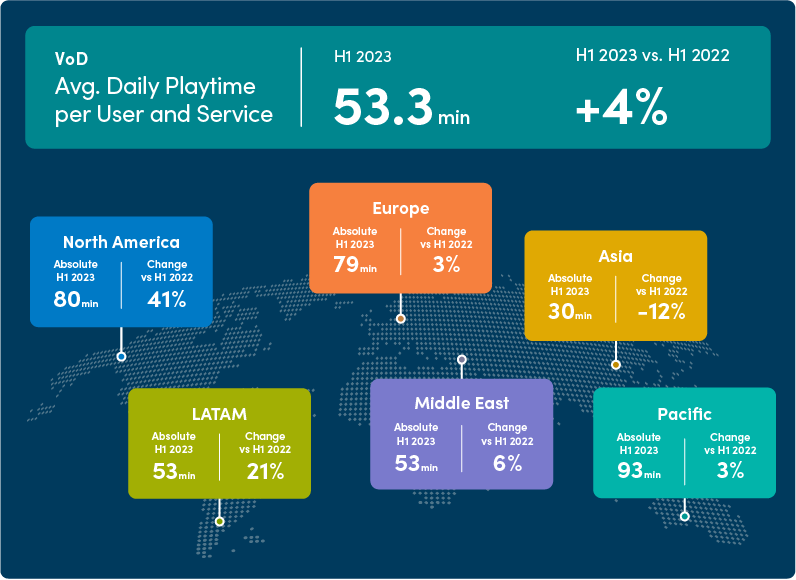Notable Streaming Trend: Time Spent on Individual Streaming Services Is Rising Again
Increased competition had been reducing time spent on individual streaming services since 2021 according to NPAW

BARCELONA —After years of decline, streaming services experienced a surge in daily engagement per user on a global basis in the first half of 2023, reversing the downward trend that started in 2021 as competition between services began taking a toll on the amount of time that consumers can spend on each streaming platform, according to a new report from NPAW.
“The first half of 2023 marked a potential turning point for the global video streaming industry as daily user engagement per streaming service began to increase for the first time since 2021,” said Ferran G. Vilaró, CEO and co-founder of NPAW. “Access to deep, actionable data insights is crucial for navigating these changes and determining whether engagement will continue to increase.”
Why streaming time spend on individual services is rising, remains, however, unclear and it varied widely around the world.
In terms of average daily playtime for VOD content on individual streaming services, the NPAW data saw a 41% increase in North America to 80 minutes in the first half of 2023 compared to a year earlier. Globally, the average time spent with VOD streaming content increased by 4% to 53.3 minutes.
NPAW researchers noted that the uptick in user engagement per service, measured in daily playtime per user and service, might signal some degree of market consolidation, with consumers focusing on a select few online video platforms. Another explanation could simply be an overall increase in streaming consumption.
NPAW’s H1 2023 Video Streaming Industry Report also highlights how streaming adoption grew substantially year-over-year for major sporting events in the first semester of the year.
The report documented year-over-year increases in total plays, playtime, and unique users for events like Wimbledon or the NBA Finals and underscored the powerful engagement power of live sporting events. It also confirms the growing trend of sports fans shifting to online video platforms and away from traditional broadcast and satellite channels.
The professional video industry's #1 source for news, trends and product and tech information. Sign up below.
Other notable trends for the first half of 2023 from the report included:
- For the first time since 2021, the number of VoD minutes that consumers watch per day, per streaming service increased globally (+4%). This suggests that consumers may either be focusing on a few select services or that overall consumption is rising
- The global linear TV playtime per user and streaming service also increased by 3%, reversing the downward trend that began in 2021 and confirming a potential industry-wide shift
- VoD consumers showed an overwhelming preference for episodic content, with episodes accounting for 60% of the total global playtime while movies only captured 25%
- The Quality of Experience for VoD improved globally despite bitrate stabilization as providers achieved a significant reduction in buffering times
- Global linear content quality improved in all key metrics, with a mixed picture at the regional level suggesting potential challenges in some areas
- Big screens, particularly smart TVs, continued to expand their dominance in VoD and, more notably, in linear content. On the other hand, small-screen devices lost share, particularly smartphones, consolidating their position as secondary streaming devices
- Sports streaming continued to grow as the major sporting competitions of the first half of the year saw substantial increases in streaming adoption and engagement compared to the previous year
The full report is available here.

George Winslow is the senior content producer for TV Tech. He has written about the television, media and technology industries for nearly 30 years for such publications as Broadcasting & Cable, Multichannel News and TV Tech. Over the years, he has edited a number of magazines, including Multichannel News International and World Screen, and moderated panels at such major industry events as NAB and MIP TV. He has published two books and dozens of encyclopedia articles on such subjects as the media, New York City history and economics.


